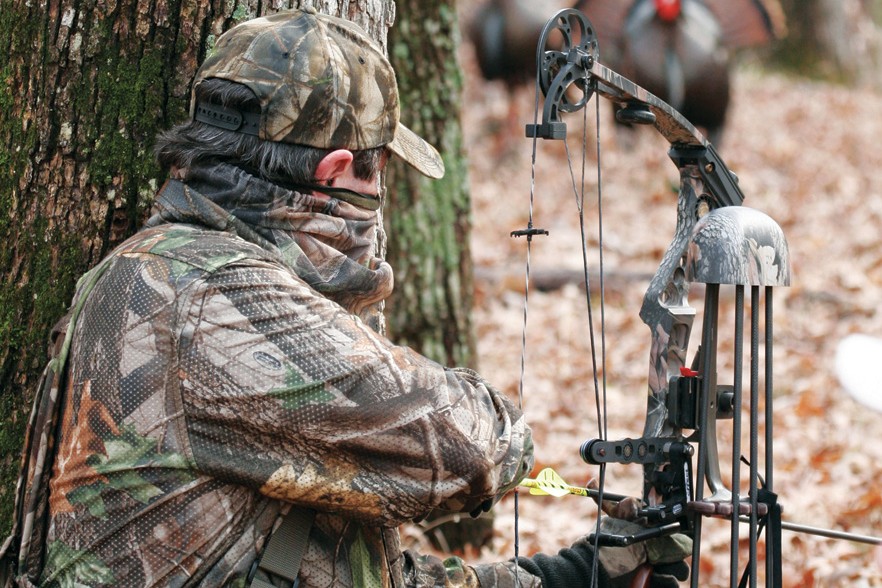The scoop on why mechanical broadheads are best for taking down toms
Advertisement
Whether you hunt with a crossbow, compound bow or traditional bow, your choice of broadhead is the most crucial part of the hunting equation. And when it comes to hunting wild turkeys, the only choice is a large mechanical broadhead—if you’re a proponent of body shots, that is, as I am.
Of course, if you’re fully committed to headshots, there are broadheads designed specifically to get the job done. The thing is, an errant body shot with one of these will usually result in a wounded bird. But can you kill a gobbler with a fixed-blade broadhead? Absolutely. However, be forewarned—you will lose birds, which is totally unacceptable.
Advertisement
No, as far as I’m concerned, the only option for hunting wild turkeys is a good mechanical, or expandable, broadhead.
The Broadhead
The key is to use a mechanical blade with a cutting diameter of at least two inches. I shoot a two-blade mechanical that opens to a whopping 2¾ inches. I’ve dubbed it the “flying axe.” With a big mechanical such as this, I’m afforded some room for error in shot placement—even if my aim is a little off, the large cutting diameter will still inflict lethal damage and anchor the bird on the spot. This is critical, because the last thing I want is a wounded gobbler running off into heavy cover. Wounded birds are hard to find, as they leave very few tracks and even less blood.
The set-up
There are many different opinions on the best set-up for turkeys. Some bowhunters suggest shooting a lower poundage to avoid total pass-through of the arrow. However, I shoot large mechanicals with the same compound set-up I use for moose, deer and bear, and I rarely get a pass-through. This is a good thing—an arrow that stays in the bird will impede its ability to run or fly.
Advertisement
I suggest using whatever you feel comfortable with and can shoot accurately, whether it’s a compound, traditional or crossbow. Just don’t forget to check the regulations to make sure you meet the legal requirements for bowhunting turkeys in the area you wish to hunt. In Ontario where I hunt, for example, compounds and traditional bows must have a draw weight of at least 39.7 pounds, while crossbows must have a minimum draw weight of 99.2 pounds.
The shot
When using a large mechanical broadhead, I follow just one rule—aim for the centre of the largest mass the bird presents to me. The ideal scenario is a broadside bird. That way, if I happen to shoot a little high, I cut the spine or back. If I shoot a little low, I will get the hips, which is sure to stop it in its tracks—a turkey needs its legs to run, as well as to launch off the ground to fly. Either way, the end result is a tagged bird.
The same rule applies for a tom that’s facing you or looking away from you. Simply put, if you centre the bird, you will punch the vitals. A turkey that’s shot solidly in the body with a large mechanical is a dead bird and your recovery rate will be measured in feet, not yards. And that’s a good thing.
3 good mechanicals
- Aftershock Archery HyperShock HS125—I call this the “flying axe”—with a 2¾-inch cut, it’s an awesome head.
- Rage Broadheads—I like the two- and three-blade designs.
- Rocket Broadheads Turkey Tom-O-Hawk—One word: deadly.

